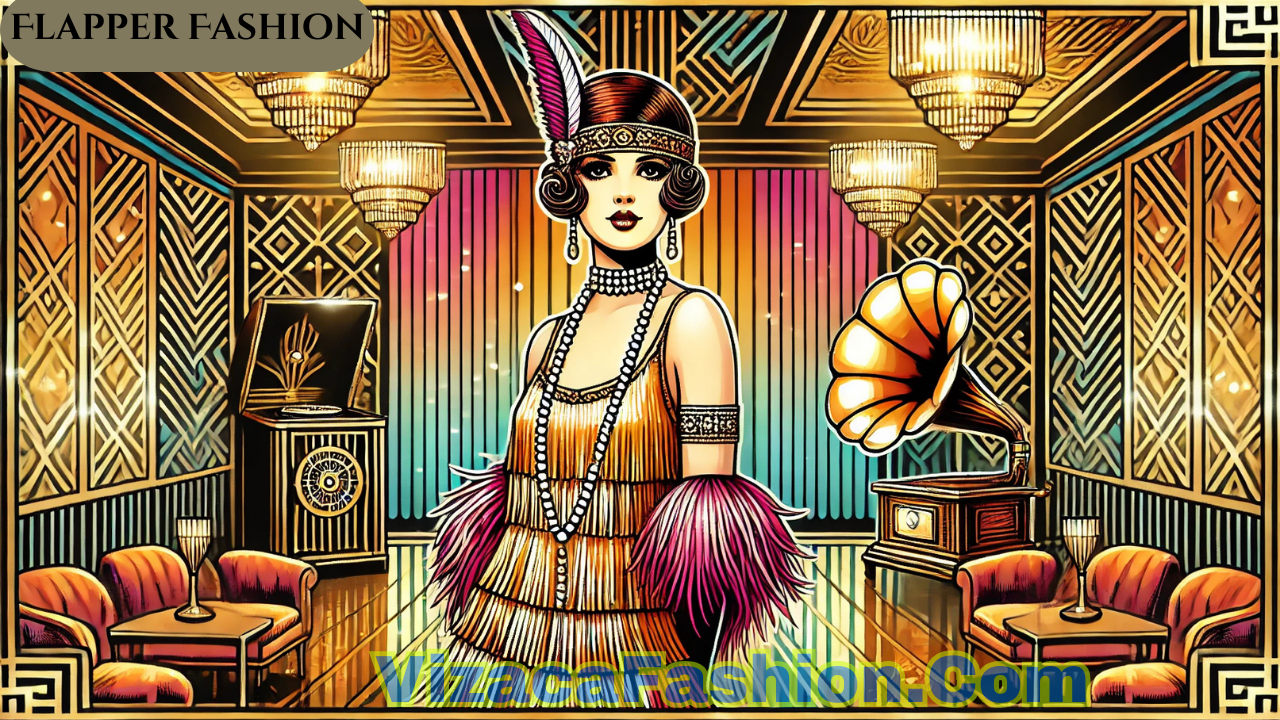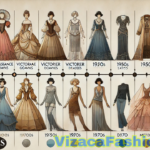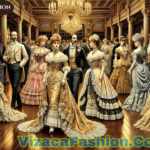The 1920s was a transformative decade that saw significant changes in culture, society, and fashion. One of the most iconic representations of this period was flapper fashion. Flapper fashion, often referred to as “1920s flapper fashion,” broke away from traditional norms, embodying a new sense of freedom and rebellion. This revolutionary style symbolized the progressive spirit of the Jazz Age and remains a timeless influence on modern fashion.
The Emergence of Flapper Fashion
The term “flapper” originally described young women who embraced a carefree lifestyle, characterized by bold attitudes and unconventional behaviors. Flapper fashion emerged as a reflection of this spirit, offering a stark contrast to the restrictive clothing of previous eras. The 1920s flapper fashion was all about freedom—freedom to move, express oneself, and defy societal expectations.
Key Elements of Flapper Fashion in the 1920s
Flapper fashion in the 1920s was defined by several distinctive features:
- Short Hemlines: Flapper dresses often featured hemlines that ended just below the knee—a daring departure from the floor-length dresses of earlier decades. This shorter style allowed for greater mobility and reflected the bold attitudes of flappers.
- Dropped Waistlines: Dresses with a dropped waistline created a straight, boyish silhouette, which was a hallmark of 1920s flapper fashion. This design rejected traditional notions of femininity and emphasized comfort.
- Luxurious Fabrics and Embellishments: Flapper dresses were often made from lightweight fabrics like silk and chiffon, adorned with intricate beadwork, sequins, and fringe. These embellishments added movement and sparkle, perfect for dancing the night away.
- Bold Accessories: Flappers accessorized with long pearl necklaces, feathered headbands, cloche hats, and embellished handbags. These accessories added a touch of glamour and sophistication to their ensembles.
- Practical Footwear: T-strap heels and Mary Janes were popular among flappers, combining style with comfort for energetic dances like the Charleston.
The Cultural Impact of Flapper Fashion
Flapper fashion was more than just a trend; it was a cultural statement that challenged traditional norms and redefined femininity. During the 1920s, women began to assert their independence in various ways, from gaining the right to vote to entering the workforce in larger numbers. Flapper fashion symbolized this newfound autonomy and the desire to break free from societal constraints.
Rejection of Victorian Standards
Before the 1920s, women’s fashion was dominated by corsets, layers of fabric, and elaborate designs that prioritized modesty over comfort. Flapper fashion in the 1920s rejected these restrictive styles in favor of loose, unstructured clothing that celebrated movement and individuality.
The Influence of Jazz and Dance
The Jazz Age was a defining aspect of the 1920s, and flapper fashion was intrinsically linked to this vibrant musical era. Jazz clubs and dance halls became popular social hubs, and flapper dresses were designed to accommodate energetic dances like the Charleston and the Foxtrot. Fringe and beadwork on dresses accentuated movement, making them perfect for the lively atmosphere of the time.
Changing Beauty Standards
Flapper fashion also brought about a shift in beauty standards. The ideal flapper look featured short bobbed hairstyles, smoky eye makeup, and bold red lipstick. This departure from traditional beauty norms emphasized self-expression and individuality, aligning with the progressive attitudes of the 1920s.
The Enduring Legacy of Flapper Fashion
Though the flapper era was relatively short-lived, its impact on fashion and culture has endured for decades. The bold, rebellious spirit of flapper fashion continues to inspire designers and trends, making it a timeless symbol of innovation and individuality.
Revival in Modern Fashion
Modern fashion often draws inspiration from the 1920s flapper fashion. Elements like fringe detailing, beaded embellishments, and dropped waistlines frequently appear in contemporary collections. Designers pay homage to the elegance and boldness of flapper style, incorporating it into evening wear, wedding dresses, and even casual attire.
Pop Culture and Media
Flapper fashion remains a popular theme in movies, TV shows, and stage productions set in the 1920s. Films like The Great Gatsby have brought the glamour and sophistication of the era to life, rekindling interest in flapper fashion in the 1920s.
Why Flapper Fashion Matters Today
Flapper fashion is more than just a nostalgic trend; it’s a reminder of a pivotal moment in history when women challenged societal norms and embraced their individuality. The styles of the 1920s flapper fashion were revolutionary, representing freedom, creativity, and empowerment. Today, they continue to inspire those who value self-expression and innovation.
A Celebration of Freedom and Boldness
The essence of flapper fashion lies in its celebration of freedom—freedom to move, to express oneself, and to redefine femininity. It’s a style that encourages boldness and creativity, making it as relevant today as it was a century ago.
Lessons from the Past
The flapper movement teaches us the importance of challenging conventions and embracing change. By looking back at the transformative power of flapper fashion 1920s, we can find inspiration to push boundaries and create our own unique styles.
Conclusion
Flapper fashion was more than just a trend; it was a cultural revolution that redefined the way women dressed and expressed themselves. The styles of the 1920s flapper fashion—characterized by shorter hemlines, dropped waistlines, luxurious fabrics, and bold accessories—captured the spirit of a generation seeking freedom and individuality. Today, this iconic style continues to inspire designers, artists, and fashion enthusiasts, proving that the boldness and innovation of the flapper era are timeless.


